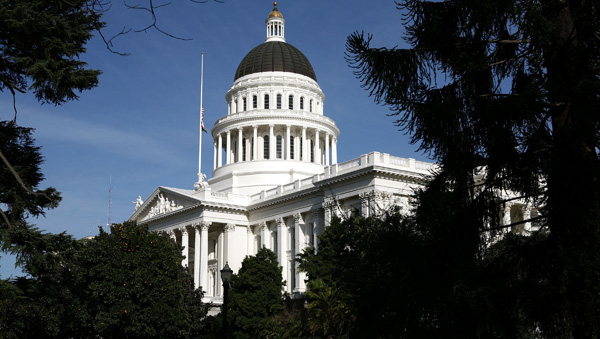The commission and state Department of Finance interpreted that language to mean that the Academy of Art University and other schools would have to meet state requirements in October 2012 and October 2013 to get back into the Cal Grants program in 2014.
But at a hearing last week, state Sen. Mark Leno, D-San Francisco, argued that lawmakers had never agreed to a two-year penalty and that such a punishment was unfair.
Michael Cohen, chief deputy director of the state Department of Finance, which opposes the change, said the sanction period had been established clearly as two years. In addition, he said, the change would reduce the amount of financial aid money the state would save.
California began limiting Cal Grants for colleges with high student loan default rates in 2011 in an effort to hold schools accountable for the state aid they receive. The idea is that colleges where many students default on loans might not be adequately preparing graduates for jobs.
The first round of penalties, which took effect in fall 2011, affected colleges where default rates hit 24.6 percent or above.
Lawmakers tightened the sanctions earlier this year, lowering the default rate threshold and adding graduation rates into the mix. In order to retain Cal Grant eligibility for this fall, colleges must have graduation rates of at least 30 percent and student loan default rates of no more than 15.5 percent.
The new list [PDF] of sanctioned schools was released at the end of July. The art academy is one of 154 institutions that the California Student Aid Commission deemed ineligible for Cal Grants under the new standards. Its default rate is 10.62 percent, well below the cutoff. But the school fell just shy of the graduation rate threshold, at 29.2 percent in 2010-11, the year used for the current sanction.
The academy’s 2011-12 graduation rate bounced up to 34 percent. It also kept its default rate below the cut off, at 11.9 percent, according to the school. That means the academy could regain eligibility after the sanction period. The academy was one of at least three colleges to appeal its sanction in recent weeks, but its appeal was denied.
"We're aware of the proposed change, and we support it because our current graduation rate is at 34 percent, which I believe is above the threshold," said Sue Rowley, executive vice president of educational services for the academy. "And because we are moving in the right direction, it’s unfair that students can't get their grants."
During a hearing of the Senate Budget and Fiscal Review Committee last week, Cohen, of the state Department of Finance, said an agreement on the law clearly included a two-year penalty period and the state had estimated savings based on that timeline.
“Definitely, a key fact for us in this debate is that when we set the targets in terms of savings amounts, we were assuming that these institutions were sitting out of the program for the longer period,” Cohen said.
Leno said that he did not agree to a two-year period and that such a penalty was too punitive.
“It almost sounds counterintuitive that you fall out of compliance, you do the good and necessary work, which we’re incentivizing to get into compliance, and then you meet the thresholds that we set, and then we say, ‘No, you have to sit out another year,’ ” Leno said.
Cohen countered that at a time when financial aid dollars are limited, it’s reasonable to focus dollars on colleges that consistently meet requirements.
“Those that aren’t able to meet the criteria, unfortunately, given the state of the General Fund, we can’t afford to let them back into the program right away,” Cohen said.
Judy Heiman, an analyst with the state Legislative Analyst’s Office, said the proposed change is helpful because of the confusion about whether the intent of law was to penalize schools for one or two years. She said it is reasonable to let colleges that meet the state’s expectations regain Cal Grants the following year.
The new language says a sanctioned school "shall regain its eligibility for the academic year for which it satisfies these requirements," which Heiman said makes clear the punishment period is one year.
In addition to the Academy of Art University, at least four other sanctioned colleges have pushed their graduation rates above the required threshold in 2011-12 and could regain eligibility as a result: South Coast College, the Art Institute of California in Los Angeles, Bryan College and West Coast University, Heiman said.
But their ability to bounce back will depend on their default rates. Draft versions of the rates have been provided to the colleges but will not be posted publicly by the U.S. Department of Education until the fall.
At sanctioned schools, including the academy, continuing students will see their Cal Grant awards reduced by 20 percent. New students will not get Cal Grants at all.
But Rowley said the academy will provide scholarships to all affected students to make up for the Cal Grant funds in 2012-13.
